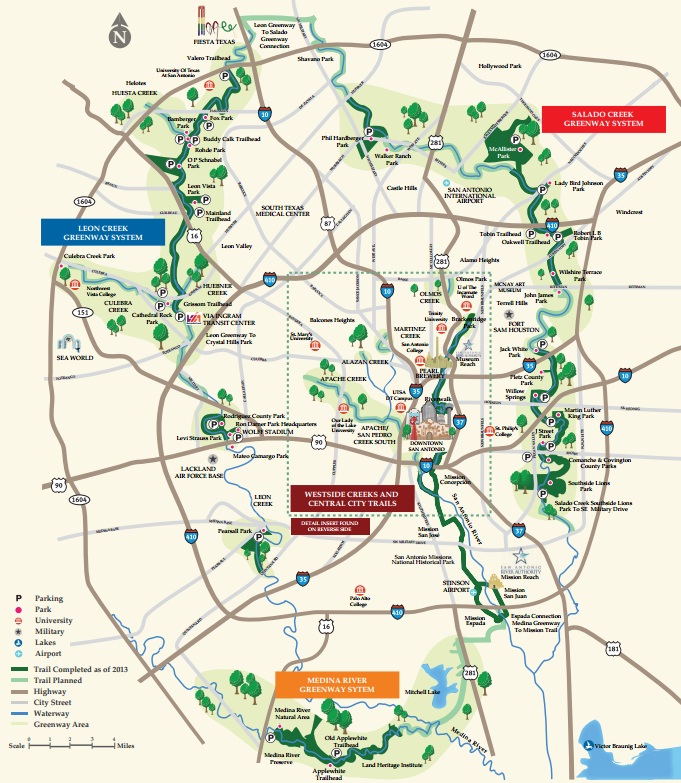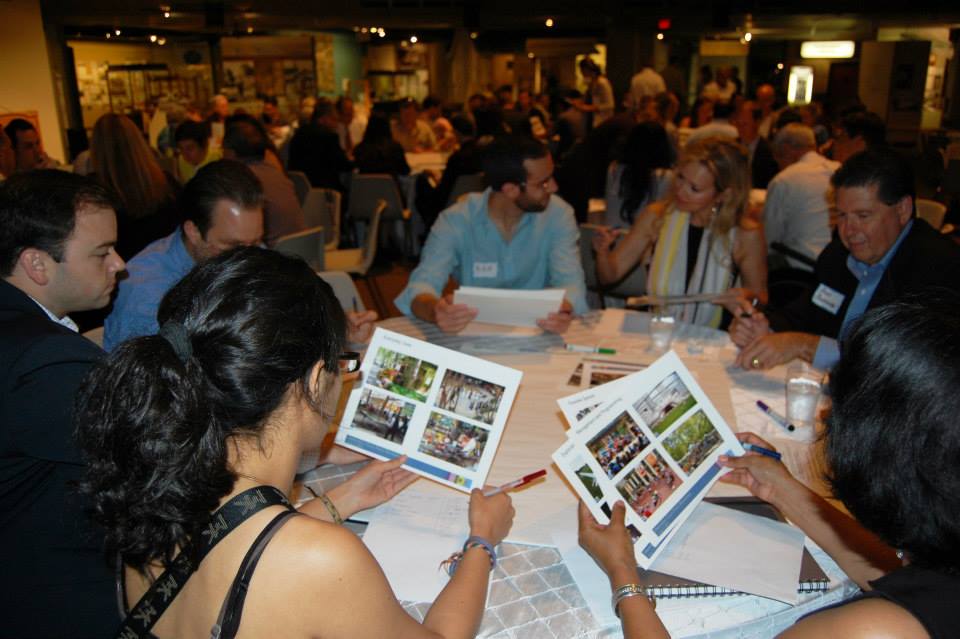Parks are more than just pretty green natural spaces. They serve many purposes beyond what we often see when we play or enjoy a nice picnic in them! It’s very important to remember the profound effects of parks on an urban community when discussing future growth or neighborhood revitalization.
According to The American Planning Organization briefing papers about the ways cities use parks, parks are used for:
Community Revitalization: Parks can be places for exercise, relaxation, and meeting that can revive commercial areas. Additionally, when residents and the city work together on a park project they can transform distressed neighborhoods. Sound familiar? Remember how San Antonio’s Hemisfair Park brought the public together to talk about revitalization, and is in the process of transforming downtown?
Community Engagement: Parks build a sense of community and improve quality of life by providing a place for people to interact. By supplying a shared vision, parks also increase interaction for a diverse group of people to work together. Don’t believe me? Check out something on the SA parks and recreation events calendar and see for yourself!
Economic Development: Parks support economic development by increasing property values and municipal revenues. They also attract people to live, work, and play nearby.

Network of parks and green spaces in San Antonio.
Creating Safer Neighborhoods: Public spaces where neighbors gather can provide social ties that produce stronger communities and safer neighborhoods. Landscaped areas are less prone to crime than barren, vacant lots. There’s a lot of data to back this one up; check out these articles: “Greening vacant lots to reduce violent crime: a randomised controlled trial,” and “Greening Vacant Lots Linked to Reduced Gun Violence.”
Forming Green Infrastructure: Parks also serve as environmental protectors of biodiversity, and can decrease public cost by supporting storm water management and flood control. When planned as a part of a greenway system, parks can serve as a buffer for incompatible land uses (like factories and residential areas), making areas more usable for pedestrians and cyclists. A network of parks is often more beneficial than isolated park space. Take a look at this network of parks in San Antonio!
Helping Children Learn: Parks provide an environment of direct experiences with nature that can motivate children to learn about the world while also taking part in physical activity. By supplying an informal learning experience through playing, parks can form an effective foundation for formal education. Therefore, city parks can provide a resource for closing the educational achievement gap in communities.
Benefiting Public Health: Parks provide opportunities for physical activity that reduce obesity and allow people to be in contact with nature. Additionally, parks can lessen pollution impacts on public health. Additionally, cities need to make sure they provide different types of parks that provide benefits to all citizen groups. San Antonio has a Fitness in the Park program for just this specific reason!
Arts and Culture Programs: Parks can be used for artistic events and activities that promote partnerships between artists and communities. Arts can also act as a key part of revitalizing a park. The collaboration between parks and artists can also help arts organizations attract new audiences and provide rehearsal and performance space.
Supporting Smart Growth: Parks help enhance mixed-use development and provide green spaces in high-density settings. Green space strengthens the urban core, but can also serve a purpose in the outskirts of the city by protecting from overdevelopment.
Managing Climate Change: Parks are the best line of defense agains urban climate issues. Although cities often have artificially higher temperatures due to the urban heat island effect, parks can counteract that effect through shading. Parks also separate carbon and other pollutants out of the atmosphere than can otherwise alter the environment of a city.
The Final Say
Needless to say, parks serve a wide range of purposes and can positively benefit the communities into which they are intentionally incorporated.
Due to the important functions of parks, SA2020 includes indicators that track acreage and access to parks and green spaces.
Is there a park near you that you wish could have this impact on your neighborhood? Advocate for your community, your neighborhood, and your parks together!


